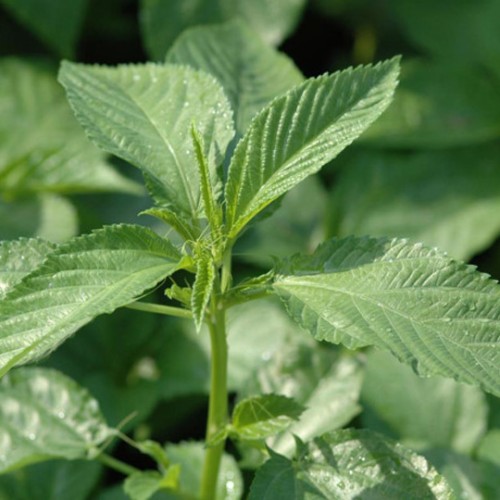



Available Options
Green Jute, also known as Saluyot or Molokhia, offers a versatile addition to your garden. These nutrient-rich seeds produce vibrant green leaves that are ideal for cooking delicious and healthy dishes.
Jute is a warm-season crop that is grown in tropical and subtropical regions. It is a fast-growing annual plant that is used for its fiber, which is commonly used to make burlap sacks, twine, and other products. Here is some information about the appearance, growing conditions, harvesting, nutrition, common use, and health benefits of jute:
Appearance:
Jute plants have long, green, slender stems that can reach up to 3-4 meters in height. The leaves are long and narrow, with a deep green color, and the flowers are small and yellow.
Growing Conditions:
Jute is a warm-season crop that requires a hot and humid climate to grow well. It prefers temperatures between 25-35°C and a rainfall of 1500-2000 mm per year. Jute is grown in well-drained sandy loam soil that is rich in organic matter.
Germination day:
Jute seeds typically germinate within 5-7 days after planting.
Harvesting:
Jute plants are usually harvested when they reach maturity, which is typically around 120-150 days after planting. The stems are cut and left in the field to dry for several days. Once dry, the leaves and bark are stripped from the stems, and the fibers are separated by hand.
Nutrition:
Jute is not commonly consumed as a food, and it is not a significant source of nutrients.
Common Use:
The primary use of jute is for its fiber, which is commonly used to make burlap sacks, twine, and other products. Jute is also used in the manufacturing of paper, textiles, and rope.
Health Benefits:
Jute fiber is known for its biodegradability, which makes it an eco-friendly alternative to synthetic fibers. Additionally, jute has a low carbon footprint and requires minimal chemical inputs, making it a sustainable crop.
Thank you for visiting our home garden:
- Fanpage: fb.com/athenagarden.org
- Instagram: instagram.com/athenagardenorg
- Website: athenagarden.org







-190x190w.jpg)










